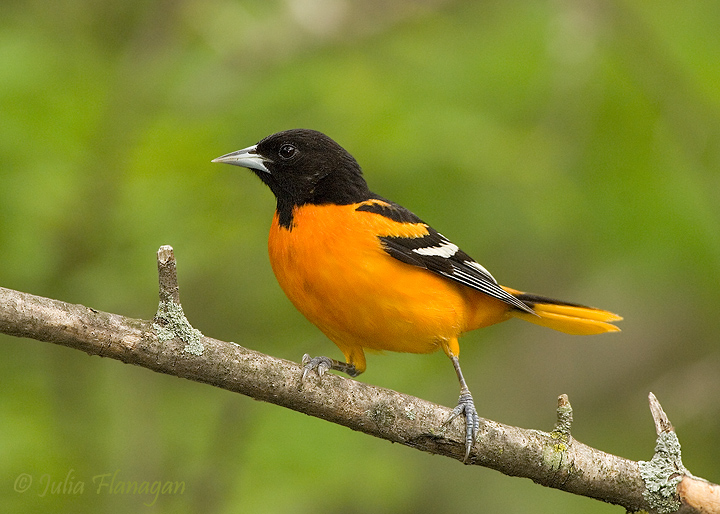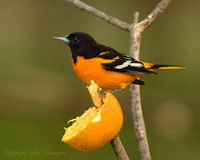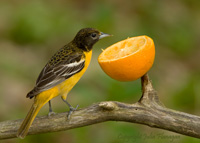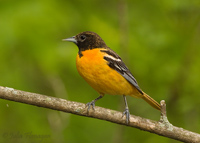
 |
 |
 |
Text by Akshay Manohar Photos
© Julia Flanagan |
||
Baltimore Oriole The Baltimore Oriole joins the ranks as one of the very few birds that actually has a Major League Baseball team named after it. But its fame doesn’t just end there. The Baltimore Oriole is also the state bird of Maryland! With a vivid combination of black and orange and a pointy beak, the males are not difficult to spot, although they may be confused with the Bullock’s Oriole. In fact, Baltimore Orioles are known to interbreed with Bullock’s Orioles and at one time were considered the same species. Females are usually black and olive and have orange underparts. In order to woo his mate, the male Baltimore Oriole is known to behave in a gentleman-like manner and graciously bows to the female after spreading his tail and wings. Their nests can be found in deciduous woodlands and shade trees, but before the tree’s decline, the American elm tree was a favorite nesting spot for the Baltimore Orioles. Four to six grayish, spotted eggs with scrawled markings of dark brown and black are laid in a well woven nest of plant fibers, bark and string that is suspended from the tip of a branch like a Christmas tree ornament. The birds brood once a year and can be found almost all over mainland USA in deciduous woodlots, woodlands, and around human habitation, where they feast on berries, fruits, insects and caterpillars and sip on nectar. In the winter, they fly to tropical climates. With luck, you might spot a Baltimore Oriole in your own backyard feeder and perhaps hear it whistle a hue-lee, hue-lee call to its mate after long pauses. Some Baltimore Orioles are of course known to yell, “Play ball!” |





